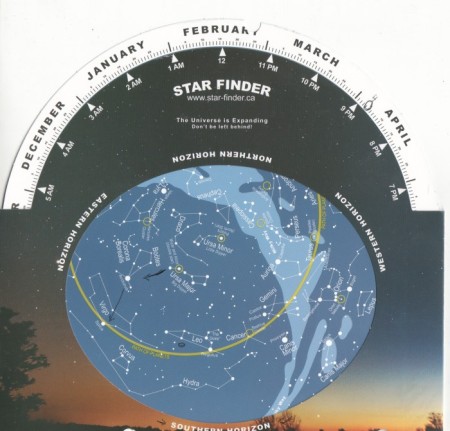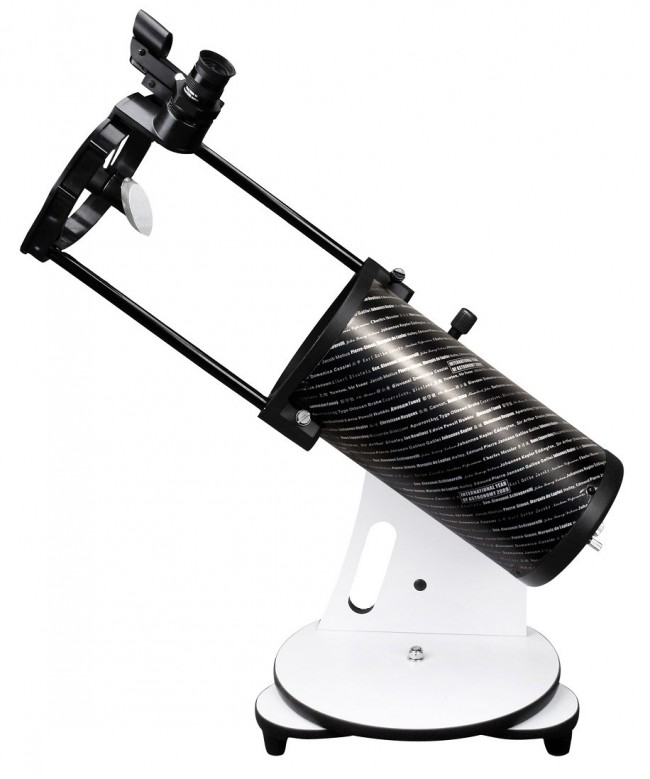Program developed by:
- Mississippi Valley Conservation Authority in partnership with:
- Royal Astronomical Society of Canada
- Ottawa Astronomy Friends
- Instructor: Pat Browne
- Assistant: Shawn McKay
- References used in this course References
- Course runs Fridays: April 1, 8, 15, 22, 29.
- Note: Donations can be receipted as charitable – best to write a cheque so that we have proper name and address information (mark it as NightSky donation). Donations can also be made on-line to Mississippi Valley Conservation via canadaHelps Choose Night Sky Conservation fund
- Course time: 7:45 – 10:00 formally with priority given to observing when clear sky .
The Night Sky above Mississippi Mills: April 1 2016 courtesy Stellarium
5 lectures covering observations of the night sky posted at the MillstoneNews Science and Nature/NightSky News https://millstonenews.com/category/columnists/night-sky-news
COURSE LECTURES
- NightSky Awareness – Vast expanse of interstellar space
- Lunar Observations – First Quarter Moon
- Stars within our galaxy – Our Galaxy we see in the Night Sky”The Milky Way”
- Star Clusters – Galactic and Globular Clusters within the Milky Way
- Galaxies and Galaxy Clusters – Beyond our own Galaxy
HOW TO OBSERVE THE NIGHT SKY AROUND US
- Explore the Universe Program Explore the Universe Exercises for Certificate
- Star charts and Spring Observing Exercises: springObserving.pdf
- Handouts and Tools
- Observing Planisphere and Planetarium Software – Stellarium
- Moon charts and Virtual Moon Software – Explore the moon with Lunar Reconnaissance Orbiter Imagery
- Earth Centred Universe RASC SuperNova Scotia Software
- Logbooks and handbooks
- Observer’s Handbook – RASC
- Isabel Williamson Lunar Observing
- Beginners Observing Guide – RASC BOG
- *YOUR* Logbook (Without a logbook you’ll always be a beginner)
Postings for the course, and discussion group are at the Mill of Kintail Night Sky Conservation Yahoo Group. Mill of Kintail – Night Sky Conservationists (You can join here by requesting invitation)
ACTIVITIES
- Visit to Fred Lossing Observatory (FLO)
- Dark Sky Observing
- Observing with binoculars and telescopes
- Constellation Practice with Handouts
- Lunar and Planetary Observing
- First Quarter Lunar Observing
- Lunar and Planetary Groupings
- Instructional Videos and tips on Night Sky Conservation
-
Night Sky Conservation:
Night Sky Bylaw created in partnership with Mississippi Valley Conservation and the Royal Astronomical Society of Canada;
- Dark skies in Mississippi Mills preserved in concert with our Night Sky Bylaw
- Bylaw implements program of Good Neighbour Dark Sky Lighting: Shield Outdoor Light fixtures to protect the ‘extinction’ of the Milky Way
- Celestial objects in outer space remain visible on clear night – comets, distant suns, clusters of stars, and galaxies
- Humans need darkness as well as light. We cannot sleep well with constant artificial light around us – Light pollution causes physical and psychological discomfort
- Night vision (scotopic) is different from day vision (photopic). Humans suffer from bright light glare finding it hard to adjust to the night sky.LED lighting How to Choose Healthy Lights
- Educate people about the night sky environment and encourage astronomical discovery such as cometary discovery. Amateurs collaborate with professionals!
Our Dark Sky Site Long History of 'Looking Up'
- Built by the scientific community with high-quality optics from the National Research Council of Canada.
- Moved from North Mountain Ontario to save it from growing light pollution.Thanks to the Preservation of our Dark Skies…FLO comet-hunters used visual observations through the telescope: discovered 5 comets, making FLO the only observatory in Canada with this distinction.

This is comet Garadd captured Spring 2012 images courtesy P. Browne
Night Sky Awareness
Star ship Earth within its Celestial Sphere
We are all traveling together through space on a giant starship – our home planet Earth. As we orbit around the Sun, we look out into infinite space in different directions. Our location on planet earth determines what stars we can see at night.
- The stars that we see during the night change from season to season because the Earth is in orbit around the sun
- Constellations along the swath of sky centered on the ecliptic (the path of the planets) are the well-known 12 zodiacal constellations, like Gemini, Cancer, Leo, … most observers get to see these constellations (assuming you are not at the North or South Pole)
- There are more constellations that we can see in the northern hemisphere – such as the circumpolar Ursa Major, Orion, etc.
- Bright Stars – those that are visible naked eye form the core of the constellations. These patterns of stars provide our roadmap to help us find our targets for observation. All the celestial objects are located within a given constellation.
- To learn the sky, learn the patterns of the bright stars in the constellations.
To understand more about how our location on earth determines what we see in space see
Navigating in our Starship Earth
Our Night Sky Horizon – Sun Below the Horizon
- During the day, the dazzling brilliance of the daytime star (the Sun) overwhelms everything else in the sky.When sunlight illuminates the atmosphere not even planets are easily visible.
- The Sun is the brilliant STAR above our horizon
- Other stars in the sky are not visible until the Sun sets below the horizon.
- The constellations are composed of bright star patterns projected onto this imaginary ceelstial sphere. They start to appear as the Sun sinks lower above the horizon and the our location on earth is bathed in darkness.
- Bright Stars act as pointers to help us find the dimmer stars, interstellar collections of gas and dust, supernova explosions, clusters of stars in and beyond our own galaxy.
The Constellations change around our Earth Orbit
- As the earth orbits around the Sun in the year, the night sky will contain different objects, different constellations.
- Because our orbit around the sun changes our direction in space, it changes what constellations are visible at night, when the Sun is below the horizon. For example, the constellation Gemini is hidden by the glare of the Sun around the summer segment of the orbit, and does not appear above the horizon when northern astronomers observe.
The sky in different times of year:
Courtesy R. Dick, The Celestial Sphere, Starlight Theatre
Time of Year = Location of the Earth in its Orbit
 Here is a link describing what happens to our sky as we travel in our yearly orbit: A Year on Earth. Note Small errata: The position of the sun on vernal and autumnal equinox is 1/2 point on the graph midway up the y-axis not the cross-over point on the Analemma
Here is a link describing what happens to our sky as we travel in our yearly orbit: A Year on Earth. Note Small errata: The position of the sun on vernal and autumnal equinox is 1/2 point on the graph midway up the y-axis not the cross-over point on the Analemma
Sky Globe – Earth-Sky Relationships:
From aboard our ‘star ship’ we can look out in various directions at the universe that surrounds us…
- To explore the night sky we consider the dome of the sky as a sphere of infinite depth. This is our Celestial Sphere
- In order to measure positions of this dome we have to think in terms of angles on this sphere.
- The stars and constellation patterns that we see are determined by how far up or down from the Celestial Equator we are.
- Constellations near the North pole, like the Big Dipper are visible to observers North of the Equator. These stars never set, but rotate around the pole through the seasons.

Heavens Above – Night Sky Objects that Come and Go
Solar system objects are not fixed in the Sky but appear above our horizon at night when their location is away from the glare of the Sun. Planets, comets and asteroids wander through the heavens at different times of the year depending on their relative position in their orbit with respect to our orbit around the Sun.
Typical objects to view if the night sky is clear:
- Tonight, Jupiter will be visible in the evening sky as shown in the stellarium image
- 7 other satellites of the Sun and the moon lie in the plane of the ecliptic.Only Mercury, Venus, Mars, Jupiter and Saturn are visible naked eye.
Our Nearest Neighbours – Solar System:
Planets, comets and asteroids wanderers around the Celestial Sphere they move night after night in relation to Earth
The Planets and Cometary objects in our Solar System are visible to us when
their orbit takes them away from the glare of the sun into our night sky:
- Hence we do planetary and comet observations when they appear above our horizon as they travel along the ecliptic (or, for comets, on their eccentric heliocentric path) after the Sun has set below the horizon.
- In different years, we will see planets at different times. Their position is not fixed on our celestial sphere. They are wanderers, and may become morning or evening stars depending on their proximity to the Sun. Shown below is the path of the planets in the nightsky a couple of years ago – Jupiter was in Gemini…
When Planets grace our Night Sky : Read more here Planets and their Path around the Sun
Our Distant Suns – Stars and Constellations on the Celestial Sphere
We can also use a 2-dimensional aid , a Planisphere to determine what is over our heads way up in the sky tonight:
Planisphere “Plan your Sphere!”
From Solar System to the Stars and then to distant Galaxies
With just a 5″ reflector telescope we can explore stars, clusters of stars, interstellar gas and dust containing supernovae remnants and star nurseries. We can even explore galaxy systems outside of our own Milky Way galaxy.
- Milky Way – more than 200 billion stars. All of these celestial objects form a majestic backdrop to the velvet canvas of night:

- We can observe systems of stars, star clusters that are found within constellation boundaries.(See Observing Star Clusters in and Around the Milky Way)
- We use constellations as a set of featured patterns that guide us to finding our star clusters in binoculars or telescopes
- Objects such as a star cluster (thousands of light years away)
- Everything seen in the stars of a constellation, or star clusters is found within our own Milky Way galaxy (100,000 light years).
- A constellation is different from an asterism . Constellations are groupings of stars that are recognized as fixed star patterns on the celestial sphere. A set of 88 officially recognized constellations completely covers the sky.. The brightest stars help delineate their form.
What to observe in the sky tonight?
When the skies are clear in April, here is a list of celestial objects that we can observe with binoculars and telescopes: See Spring Observing – Stars, Star Clusters and Galaxies in the Night Sky
NightSky Observing into the Depth of Space Observing the Night Sky – How Tos…





